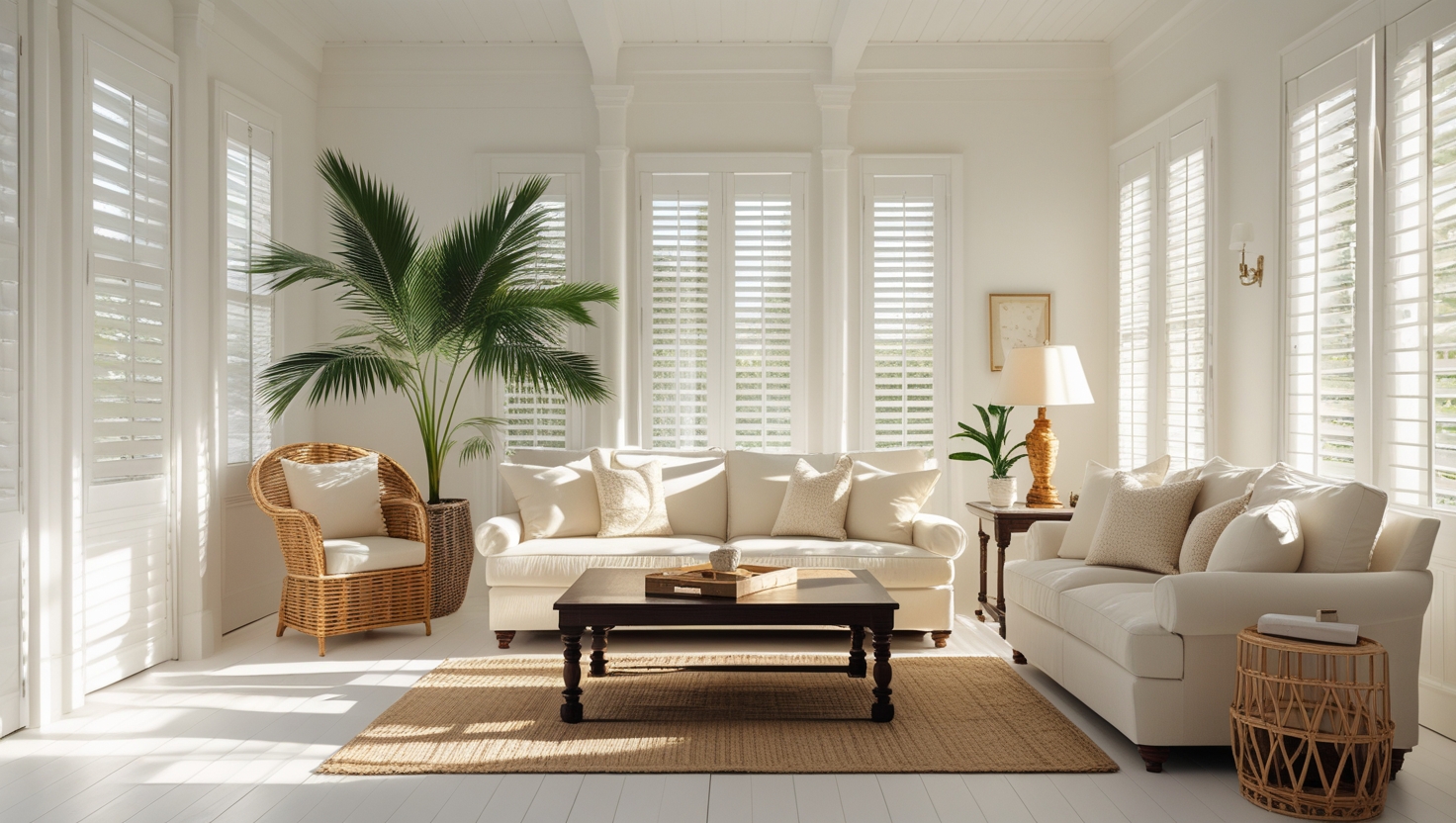Welcome to our comprehensive guide on plantation style home interiors! If you’ve ever been enchanted by the grandeur of Southern American mansions or dreamed of bringing a touch of historical elegance into your own home, you’re in the right place. Plantation style, with its roots in the antebellum South, is a design aesthetic that combines timeless sophistication with practical functionality. 10 Essential Elements of Plantation Style Home Interiors
Introduction: Why Plantation Style Interiors Are Making a Comeback
If you’re looking to give your home a warm, breezy, and elegant touch, plantation style interiors might be just what you need. Originally inspired by the stately homes of the American South, this design style mixes colonial influences, tropical touches, and natural materials to create a timeless aesthetic that feels both luxurious and laid-back. Whether you live in a sunny Californian suburb or a cozy countryside home in the UK, the plantation look works beautifully across climates thanks to its focus on natural light, sustainable materials, and airy spaces.

Plantation Style Home Interiors
Why Plantation Style Matters for You
Plantation style interiors are not just about aesthetics—they’re about creating a space that feels both grand and welcoming. Originating from the large estates of the Southern United States, this style has evolved to suit modern living while retaining its classic appeal. For readers in the USA, it’s a way to connect with a piece of American history, while for those in the UK, it offers a fresh take on traditional elegance that can complement British architectural styles like Georgian or Victorian homes. Essential Elements of Plantation Style Home Interiors Plus, with its focus on natural materials, light colors, and functional design, plantation style can be adapted to suit a variety of homes, from sprawling estates to cozy urban dwellings.
In this post, we’ll explore the key features of plantation style interiors, offering practical tips and ideas to help you incorporate this look into your own home. Our insights are drawn from trusted sources in interior design and architecture, such as the American Institute of Architects and Interior Design Magazine, ensuring that you get accurate, expert-backed information. We’ll also address the historical context of this style, ensuring a sensitive and inclusive approach. Let’s dive in!
10 Key Features of Plantation Style Home Interiors
Plantation style interiors are defined by a blend of historical charm and functional design. Below, we’ve outlined the top 10 features that bring this style to life, along with practical tips for incorporating them into your home. Each feature is backed by expert insights and historical references to ensure accuracy and inspiration.
1. Incorporate Wide, Louvered Shutters
Plantation shutters are the hallmark of this style. They’re not just decorative—they offer functional light control and insulation.
Why it works: Their wide slats allow sunlight to filter in gently while offering privacy.
Pro tip: Go for white or off-white shutters to reflect more light and create that signature bright, breezy feel.
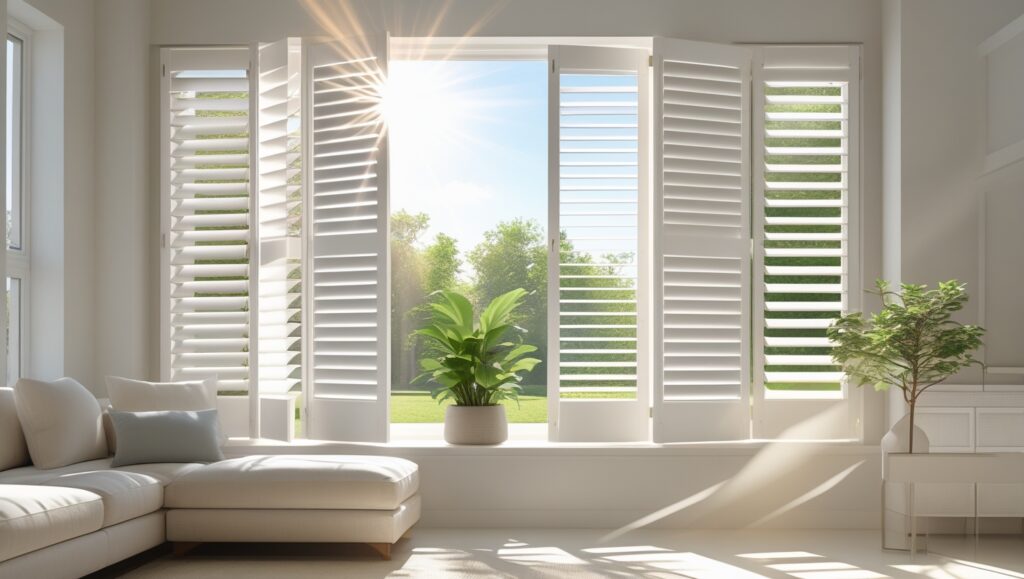
Incorporate Wide, Louvered Shutters
Read More:- Top 8 Florida Home Interior Design Trends for 2025
2. Use Natural Materials like Wood, Rattan, and Cane
The plantation look is all about organic textures. Think wood floors, rattan furniture, and cane-backed chairs.
Why it works: These materials are sustainable and bring warmth and texture to any space.
Design tip: Mix finishes—like dark mahogany furniture with light rattan accessories—for visual depth.
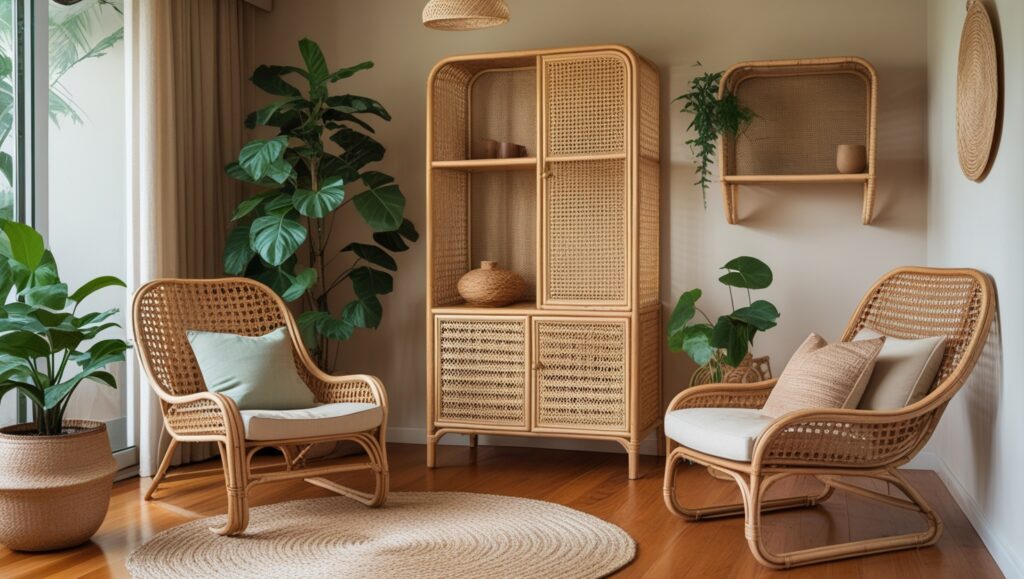
Use Natural Materials like Wood, Rattan, and Cane
3. Opt for Light, Neutral Color Palettes
Creams, beiges, soft greens, and whites are typical of plantation interiors.
Why it works: These shades make rooms feel larger, brighter, and more tranquil.
Decor idea: Add pale blue or sage green accents for a colonial Caribbean vibe.
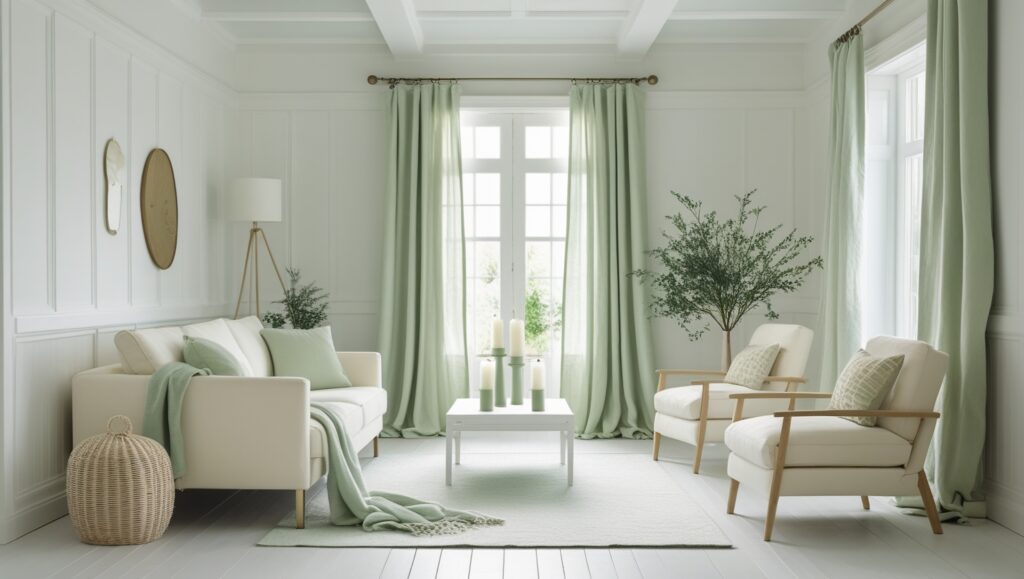
Opt for Light, Neutral Color Palettes
4. Install High Ceilings with Fans or Pendant Lighting
Tall ceilings are a signature of Southern plantation homes, often with slow-turning ceiling fans.
Why it works: It improves air circulation and enhances vertical space.
Lighting tip: Choose oversized pendant lights with an antique finish to match the traditional appeal.
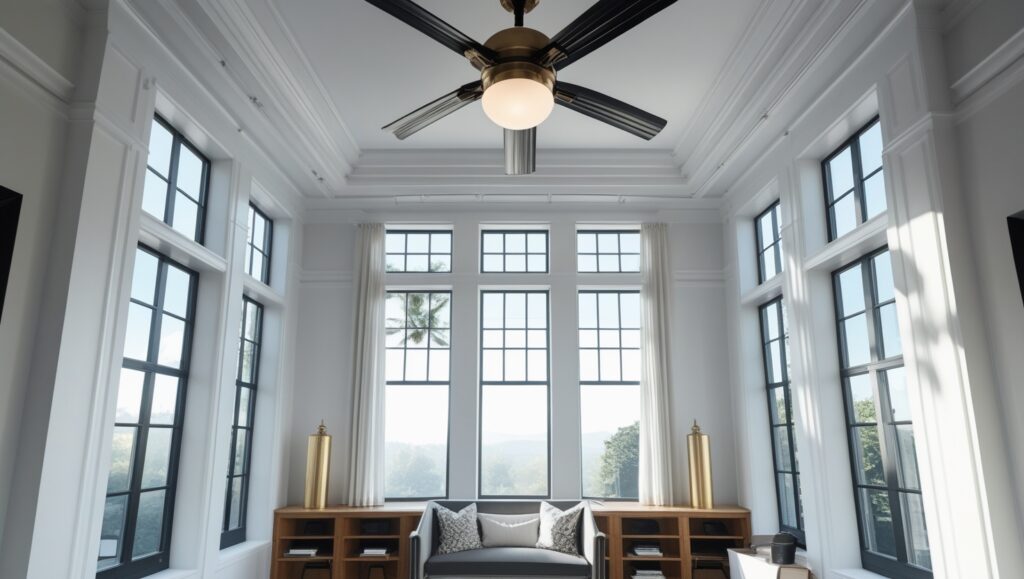
Install High Ceilings with Fans or Pendant Lighting
Read More:- The Ultimate Guide to Choosing Interior Colours for Your Open Concept Luxury
5. Layer with Breezy, Sheer Curtains
Instead of heavy drapes, plantation homes often use linen or cotton curtains to let light through while softening the room.
Why it works: Natural fabrics feel light and airy—perfect for the plantation look.
Bonus tip: Choose longer curtains that pool slightly at the bottom for a romantic, vintage effect.
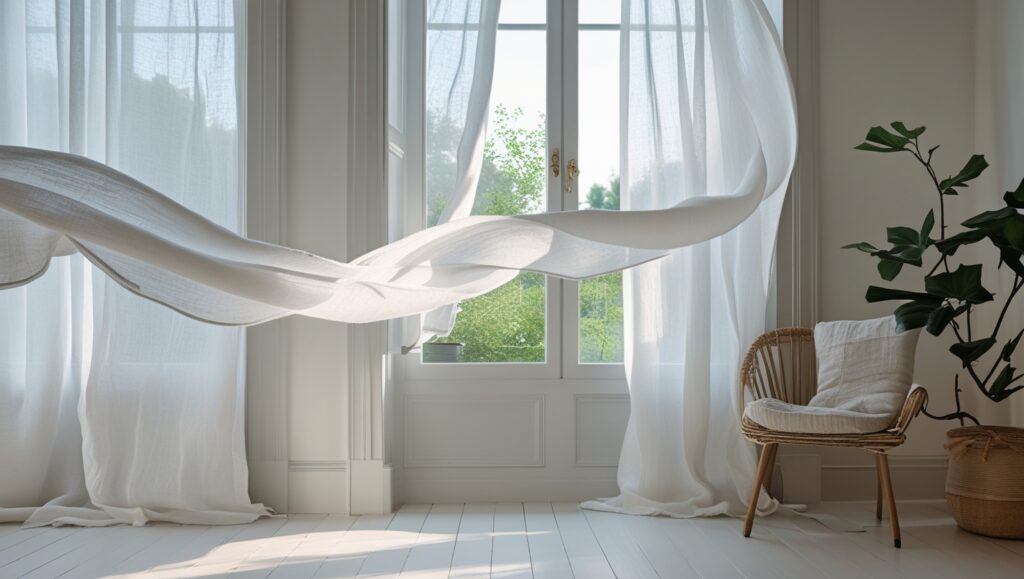
Layer with Breezy, Sheer Curtains
6. Incorporate Colonial-Style Furniture
Classic furniture pieces with carved wood legs and rich tones fit beautifully with this interior theme.
Why it works: These pieces add historical elegance to your space.
Buying tip: Look for reproduction pieces if you’re on a budget—many UK and US retailers carry beautiful options.
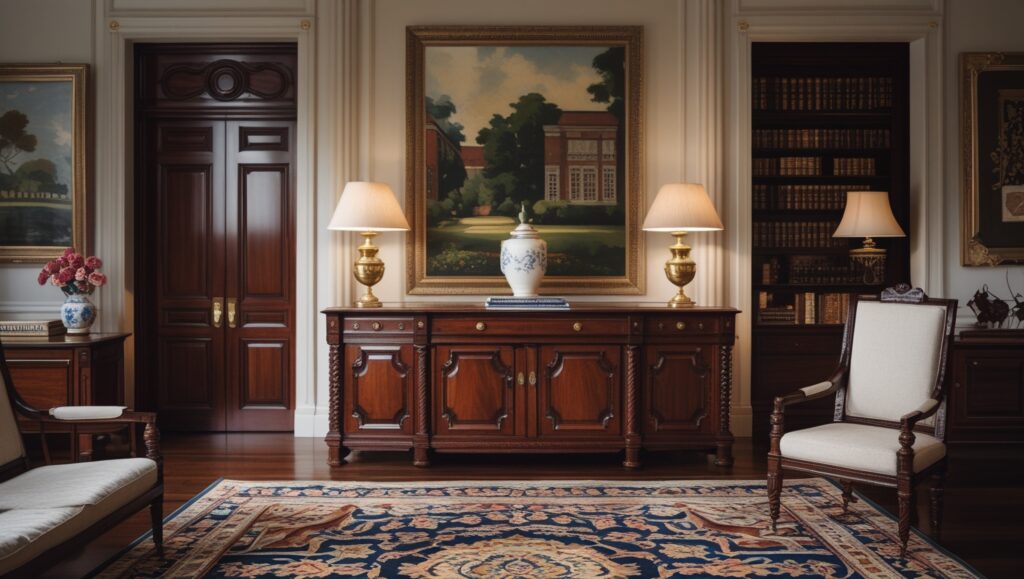
Incorporate Colonial-Style Furniture
7. Add Tropical Houseplants
Think palms, ferns, and fiddle leaf figs. These plants bring the outdoors in—just like plantation homes were designed to do.
Why it works: Greenery creates freshness and enhances the natural, earthy atmosphere.
Easy-care pick: Try a Kentia palm—it thrives indoors and fits the tropical aesthetic.
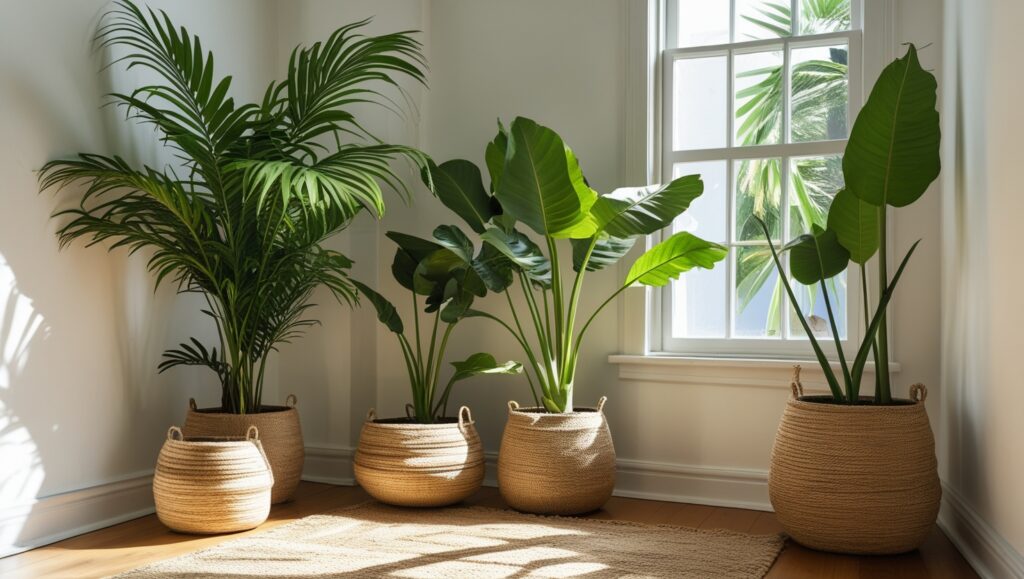
Add Tropical Houseplants
8. Focus on Verandah or Porch Spaces
Plantation homes often have large, wraparound porches for relaxing and entertaining.
Why it works: Porches extend your living space and create a charming transition between indoor and outdoor life.
Style tip: Use rocking chairs, hanging plants, and outdoor ceiling fans for authentic vibes.

Focus on Verandah or Porch Spaces
9. Choose Woven and Textured Rugs
Skip the wall-to-wall carpets. Instead, layer natural fiber rugs like jute, sisal, or seagrass.
Why it works: These materials are durable and fit the natural elegance of the plantation style.
Design tip: Use them to break up large spaces and define seating areas.
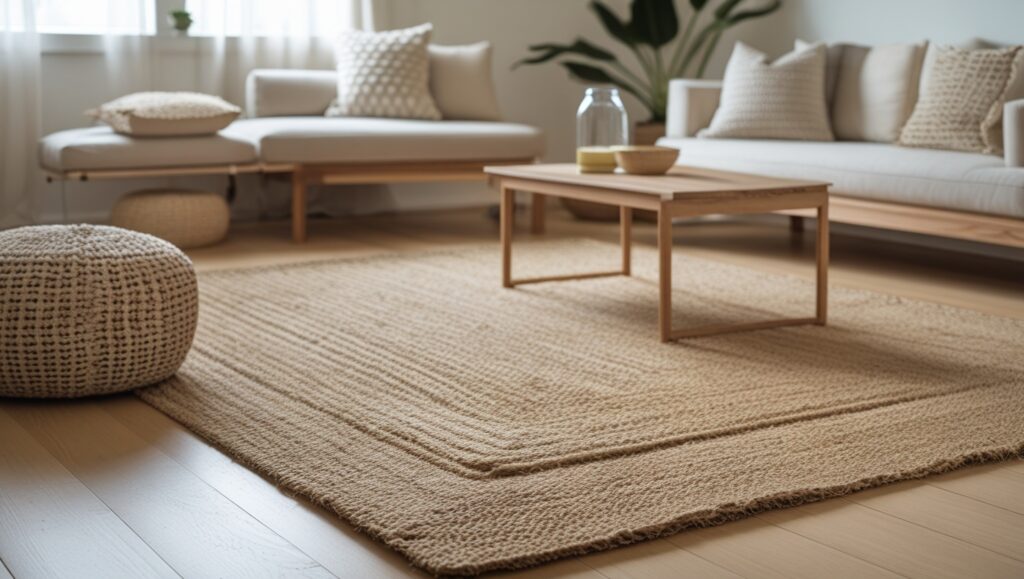
Choose Woven and Textured Rugs
10. Embrace Symmetry in Room Layouts
Classic plantation interiors follow balanced, symmetrical arrangements in furniture and decor.
Why it works: It creates harmony and timeless elegance.
Layout idea: Use matching armchairs flanking a fireplace or twin bedside tables for symmetry.
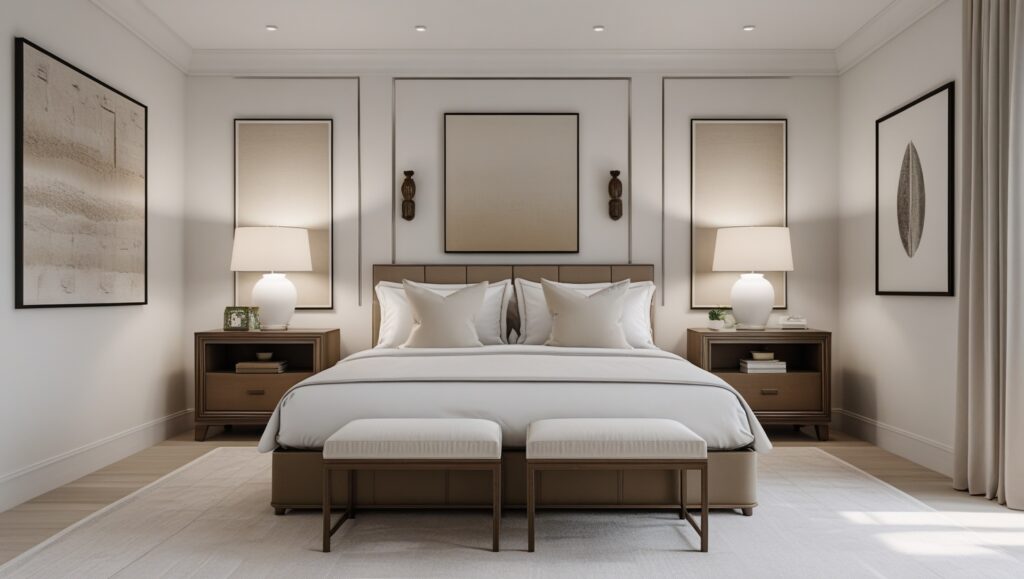
Embrace Symmetry in Room Layouts
Conclusion
Plantation style home interiors offer a unique blend of historical elegance and timeless design that can transform any space into a haven of Southern charm. By incorporating key features like grand entrances, high ceilings, rich wood furniture, and luxurious fabrics, you can create a home that feels both classic and inviting. Whether you’re renovating a historic property or adding touches of this style to a modern apartment, the possibilities are endless.
However, it’s crucial to approach this style with an awareness of its historical context. By creating inclusive spaces and supporting ethical design practices, you can enjoy the beauty of plantation style while respecting its complex past. For more inspiration and tips, explore our other posts on interior design, such as Top 10 Interior Design Styles for 2025, or contact us for personalized design advice. We’d love to hear how you’re bringing plantation style into your home—share your thoughts in the comments below!
FAQs
1. How can I make plantation style work in a modern home?
Blend traditional elements with modern functionality. For example, pair dark wood furniture with sleek, contemporary lighting, or use open floor plans instead of formal, separate rooms. Sustainable or reclaimed materials can also add a modern twist, aligning with eco-conscious trends.
2. Is plantation style only suitable for large homes?
No, while traditionally associated with large estates, many elements of plantation style can be adapted to smaller spaces. Use lighter colors to make rooms feel larger, choose smaller-scale furniture, and focus on key decorative elements like rugs and accessories to create the look in any size home.
3. What’s the biggest mistake people make?
Over-formalizing. Plantation homes were working estates—leather-bound books stacked casually or unpolished silver is authentic!
4. What are some modern takes on plantation style?
Modern interpretations might include minimalist decor alongside traditional furniture, open floor plans, and the use of smart home technology. Mixing materials, like dark wood with metal or glass, can create a fresh, contemporary look while retaining the style’s essence.
5. Is it appropriate to use plantation style given its historical context?
It’s important to approach this style with sensitivity. While the design elements are beautiful, they’re tied to a history of slavery and exploitation. When adopting this style, consider ways to honor the history while creating an inclusive, welcoming space. For example, incorporate art or artifacts that reflect diverse cultural influences or support artisans from marginalized communities.
